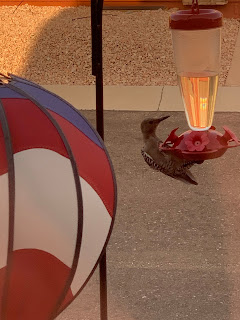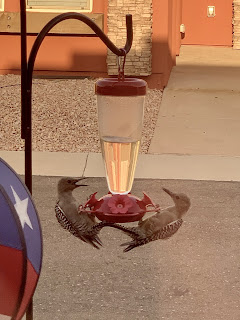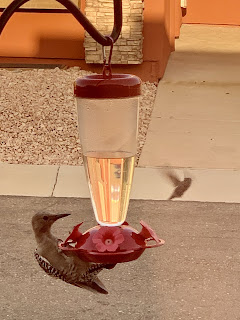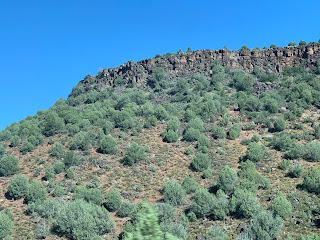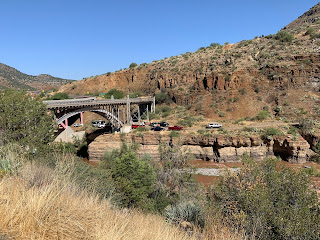Cotton is a soft, fluffy staple fiber that grows in a boll,
or protective case, around the seeds of the cotton plants. The
fiber is almost pure cellulose and is often spun into yarn or
thread and used to make a soft breathable textiles.
The use of cotton for fabric dates back to prehistoric times
and fragments of cotton fabric have been found in the
Indus Valley Civilization as well as Peru, where cotton
revenants date back to 6000 BC!!!
So on our outing 9/22/20 (so Don could get a few new
geocaches), I got sidetracked by Cotton, as you might expect.
Lets begin with some facts and figures, from bloom to harvest,
about this fascinating and intriguing plant.

The first thing you notice as you drive through the farmland
is the small white flowers on green plants. That is the
start of a multi-step process... a white self-pollinating
flower appears. You often don't see it because they
only stick around for about 24 hours.
Then the white flower will become a pink color and
will continue to open fully. The flower can be a vibrant
fuchsia or even a purple hue. This phase lasts 24-36 hours.
Then the boll begins to take shape. It will eventually
turn from green to purple to brown.
When it reaches the pinnacle of its size, the bracts
dry and the boll itself cracks open and pulls apart until
the cotton fiber spills out and
harvest is immanent.
I saw all this taking place (except the harvest)
within this one photograph.
Cotton fields at this stage as far as the eye could see...
while other fields had already turned brown and
were about ready for harvest.
Arizona cotton is some of the whitest, highest-quality cotton around.
It is known for it’s extra-long staple (ELS). Typically, around the world,
cotton has a fiber staple length of only about 1 inch, whereas
AZ Supima cotton’s fiber staple length averages 1.5 inches.
Shorter fibers produce yarns that are rougher and subject
to pilling on the surface of the product, while longer fibers
contribute to the strength and softness of apparel and home products,
ensuring that they are more comfortable, retain color longer
and resist pilling over time. And it was developed right here in AZ.
Something caught my eye as I was finishing my
photography of the cotton fields. I felt like I was being watched again.
I found out later that in the third week of Sept (now) large
flights ("kettles") of migrating Broad-Winged Hawks pass thru AZ.
I caught this one resting on a telephone pole while searching for
prey in some recently harvested cotton fields.
As a hand weaver, I have used lots of cotton over the
last 48 years.
In fact years ago I purchased some natural colored cotton,
that was developed here in AZ, to weave fabric for
a summer jacket. When the yarn was on the cone,
before it was woven and washed,
you could hardly distinguish the 3 different shades.
But when it was washed, the colors bloomed.
So I decided to add some stamped embellishment to
the fabric, as shown in this close-up,
and the back looks like this.
Since cotton is so sturdy it was the perfect choice of
fiber for my handwoven seat covers for the dining room
chairs. (One of my all time favorite pieces of fabric.)
And because cotton takes color so well, I once again
chose it for this poncho which is woven
in a tapestry technique, which I developed, for fabric
for clothing... and once again embellished it with
one stamped dragonfly on the left shoulder.
I've woven many kitchen towels and always used cotton
because of its strength and softness. The more you machine
wash and dry this great fiber, the softer it gets and I
have had many of these frequently used towels for
over 20 years. (Yes Don did get a few geocaches too!!)
































